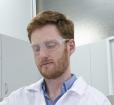

Showing 341 - 360 of 655 results


Eureka Prizes 2025

Radiation biology
The measurement and manipulation of radiation and radioactive materials within biological systems. Capabilities include access to a range of radioisotopes, gamma/X-ray sources and a selection of X-ray beams, ion beams and neutron beams for irradiation.

Role at ANSTO
Food origin research in global spotlight at Expo 2025 Osaka
ANSTO highlighted its food origin research with live shows and an expert panel discussion to showcase Australian science in the Australia Pavilion at the Expo 2025 Osaka from 8-10 October.

Role at ANSTO
Some of Sydney’s best science teachers meet its best science infrastructure

Role at ANSTO
Environment Research and Technology
ANSTO conducts and enables research to address some of Australia’s and the world’s most challenging environmental problems.
Simulation of radiation damage assists prototyping a new self-healing solar cell for next generation of power in space
Researchers developing new materials and devices that can withstand the harsh radiation environment in space are using the unique ANSTO’s capability to simulate the effects of high-energy ion irradiation on the properties and performance of these materials and devices.

Natural variability in hydrological systems
Research to improve knowledge of natural variability in rainfall and recharge by monitoring hydrological processes in key regions and reconstruct water recharge history.
Technological innovation and partnership needed to make progress on mental disorders
Earth-based research link to International Space Station
Neutron scattering instruments used by Japanese researchers.
Australia's home of nuclear medicine welcomes new Board Members
New global, first-of-a-kind ANSTO Synroc facility
A new nuclear medicine waste processing facility that showcases ANSTO Synroc technology is under construction.
The world’s best radon detector just got smaller
The need for a smaller, more transportable version of ANSTO’s 1500-litre atmospheric radon-222 monitor, and with a calibration traceable to the International System of Units, prompted the team to develop a 200-litre radon monitor that would meet those needs.
You are what you eat
Cracking the code for crop nutrition and food quality with X-ray fluorescence microscopy.
Nuclear science recognised with NSW seafood industry award
Synroc: Australian innovation increases technology readiness for waste treatment plant
